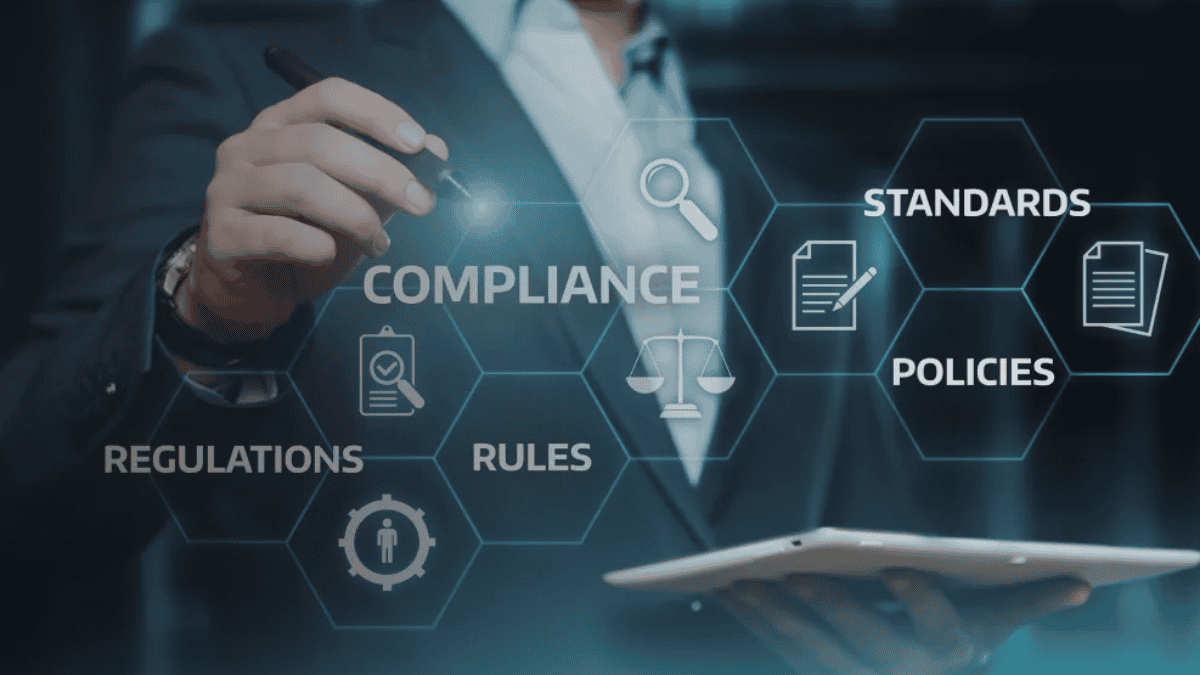Cloud governance is essential for managing and controlling cloud environments effectively. It establishes policies, processes, and standards that guide the usage of cloud resources. For small and medium-sized enterprises (SMEs), understanding this governance is pivotal for leveraging cloud services successfully, especially during cloud migration, when establishing proper controls ensures a smooth and secure transition.
Defining Cloud Governance
Cloud governance refers to the framework of policies and procedures that govern the use and management of cloud resources. It encompasses aspects such as security, compliance, and operational efficiency. This governance ensures that cloud services align with business objectives and that risks are minimized.
Key components of cloud governance include:
| Component | Description |
| Policies | Rules and guidelines for cloud usage and management |
| Compliance | Adherence to regulations and standards |
| Security | Measures to protect data and resources |
| Cost Management | Strategies for monitoring and controlling cloud costs |
| Performance Metrics | Criteria for assessing the effectiveness of cloud usage |
Importance of Cloud Governance for SMEs
For SMEs, implementing sound cloud governance is crucial for several reasons:
- Risk Mitigation: Effective governance helps identify potential risks associated with data breaches, compliance failures, and operational inefficiencies.
- Cost Control: By establishing clear guidelines on resource usage, SMEs can minimize unnecessary expenses related to cloud services.
- Enhanced Security: With well-defined security policies, SMEs can protect sensitive information from unauthorized access and cyber threats.
- Regulatory Compliance: Governance ensures that SMEs remain compliant with industry regulations, reducing the likelihood of legal issues or penalties.
- Operational Efficiency: A structured approach to cloud resource management allows SMEs to optimize their operations and improve service delivery.
Implementing a strong cloud governance framework is vital for SMEs seeking to utilize cloud technology effectively while safeguarding their resources.
Building a Governance Strategy for SMEs
Creating an effective cloud governance strategy is essential for SMEs aiming to leverage cloud technologies while maintaining control over their IT assets. The first steps involve assessing the existing IT infrastructure and identifying security and compliance needs.
Assessing Your IT Infrastructure
Evaluating the current IT infrastructure allows organizations to understand their resource allocation and identify gaps that need addressing. This assessment should consider hardware, software, and network capabilities.
Conducting a thorough evaluation helps SMEs determine what modifications or upgrades are necessary to support cloud adoption effectively.
Identifying Security and Compliance Needs
Understanding security and compliance requirements is critical in any governance strategy. SMEs must identify regulations relevant to their industry, which guide their cloud operations. This can include data protection laws, industry-specific guidelines, and internal organizational policies.
Once these needs are established, SMEs can implement necessary security measures, such as encryption, access controls, and regular audits, to ensure compliance and protect sensitive information.
Choosing Cloud Service Providers
Selecting the appropriate cloud service providers is a critical aspect of effective cloud governance for small and medium enterprises (SMEs). This section focuses on two key elements: evaluating provider capabilities and understanding service level agreements (SLAs).

Evaluating Provider Capabilities
Choosing a cloud service provider requires a careful assessment of their capabilities. Factors to consider include performance, scalability, security, and support services offered. Evaluating these elements will help ensure that the provider meets the specific needs of the organization.
Assessing these capabilities can provide SMEs with insights into which providers align with their operational expectations and governance requirements.
Understanding Service Level Agreements (SLAs)
Service Level Agreements or SLAs, define the expected level of service between the cloud provider and the customer. These documents are critical in establishing accountability and setting performance benchmarks.
Key components typically included in SLAs for cloud services are:
| SLA Component | Description |
| Uptime Guarantee | Percentage of time the service is operational |
| Support Response Time | Expected time for customer support responses |
| Data Security | Measures taken to secure data and maintain privacy |
| Penalties | Consequences for failing to meet SLA terms |
Understanding these components allows SMEs to ensure that they are protected and that their operational needs are clearly defined within the agreement. This understanding also aids in aligning cloud governance with business objectives.
Implementing Cloud Governance Policies
To effectively implement cloud governance policies, it is vital for SMEs to focus on establishing access controls and developing data protection and backup strategies. These components help ensure data security, compliance, and operational efficiency.
Establishing Access Controls
Access controls are essential in managing who can access cloud resources and data. Establishing these controls involves creating rules and policies to ensure only authorized personnel can access sensitive information.
Implementing these controls helps mitigate risks associated with data breaches and ensures compliance with regulations regarding data privacy.
Data Protection and Backup Strategies
Data protection is critical for maintaining the integrity and availability of information stored in the cloud. SMEs should develop comprehensive data protection and backup strategies to safeguard their data.
These strategies ensure that data remains secure and that businesses can recover their information quickly in the event of an incident. By prioritizing these elements, SMEs can strengthen their cloud governance framework and enhance overall operational resilience.
Monitoring and Compliance
Effective cloud governance involves continuous monitoring and compliance to ensure that cloud services adhere to the set policies and regulations. For small and medium-sized enterprises (SMEs), this aspect is critical to maintaining security and operational integrity.
Regular Audits and Monitoring
Conducting regular audits is essential for evaluating the effectiveness of governance policies in place. This process allows SMEs to identify potential vulnerabilities and areas for improvement. Audits help in assessing the accuracy of data management, security compliance, and risk management.
The following table outlines typical audit frequency and focus areas:
| Audit Type | Frequency | Focus Area |
| Security Audit | Quarterly | Access Controls, Security Policies |
| Compliance Audit | Bi-Annually | Regulatory Compliance, Data Protection |
| Performance Review | Annually | Service Levels, Resource Utilization |
| Risk Assessment | Annually | Security Risks, Operational Risks |
Addressing Compliance Requirements
SMEs must ensure compliance with industry regulations and standards when utilizing cloud services. Non-compliance can lead to significant penalties and damage to reputation. Understanding specific compliance requirements is vital for effective governance.
Common compliance areas that SMEs should focus on include:
| Compliance Area | Key Regulations |
| Data Protection | GDPR, HIPAA |
| Financial Reporting | SOX (Sarbanes-Oxley), IFRS |
| Security Standards | ISO 27001, NIST Cybersecurity Framework |
| Industry-Specific Regulations | PCI-DSS (Payment Card Industry) |
To facilitate compliance, SMEs should implement clear policies and establish a framework for monitoring adherence to regulations. Regular training sessions can also be effective in keeping staff informed about compliance requirements and best practices.
Continual Improvement in Cloud Governance
Continual improvement in cloud governance is essential for small to medium-sized enterprises (SMEs) to stay competitive and secure. Incorporating feedback loops and adapting governance strategies to business growth ensures that IT governance remains effective and relevant.

Feedback Loops for Governance
Implementing feedback loops is crucial for maintaining effective cloud governance. These loops involve regular assessments and consultations with stakeholders to gather insights and identify areas for enhancement. This ongoing process allows for timely adjustments to governance practices, fostering a more robust IT environment.
Adapting to Business Growth and Changes
As businesses evolve, cloud governance strategies must adapt accordingly. This includes revising policies, updating security protocols, and ensuring compliance with new regulations. By being proactive in adapting governance frameworks, SMEs can better handle challenges that arise with growth and changing market conditions.
As SMEs focus on cloud governance, optimizing website performance is another crucial factor for success. Performance tuning ensures that websites load quickly, deliver a seamless user experience, and maintain high availability. To learn how fine-tuning your website's performance can enhance your online presence and support business growth, check out our article, "Why Performance Tuning is Key to Website Success."
Reimagine Your Digital Capabilities with LK Tech
Continual improvement in cloud governance requires an ongoing commitment, not just a one-time initiative. By setting up strong feedback systems and staying adaptable to internal shifts, SMEs can ensure their cloud strategies align with evolving business goals. At LK Tech, we deliver top-notch IT support tailored to your unique needs, helping your organization maintain secure and efficient cloud operations.
We take pride in offering reliable and proactive solutions that empower your business to thrive. For dependable IT services in Cincinnati, trust our experienced team to guide your tech strategy. Have questions or ready to optimize your cloud setup? Contact us today and let’s get started.


